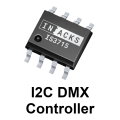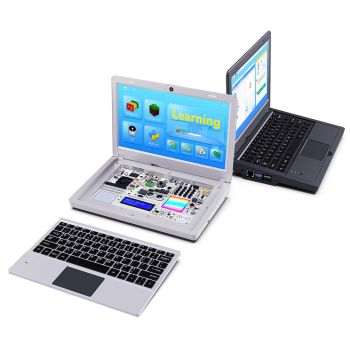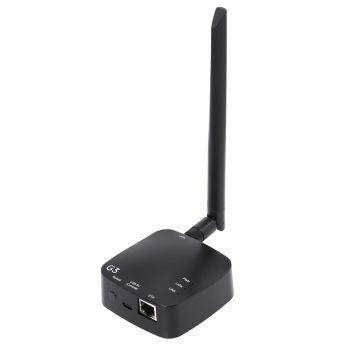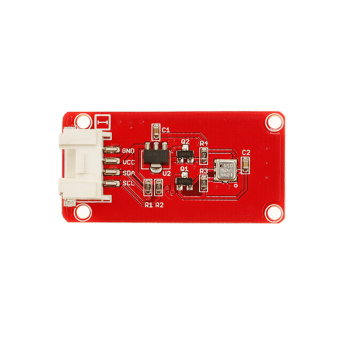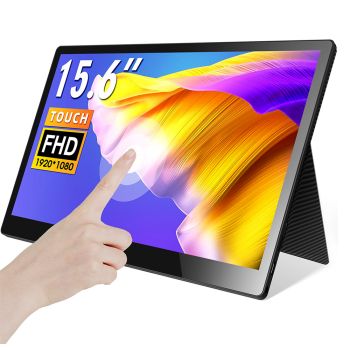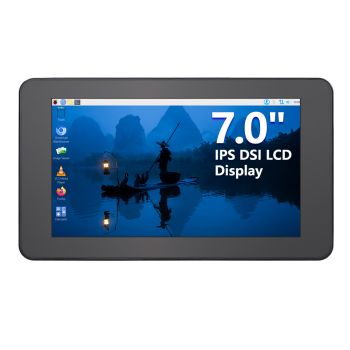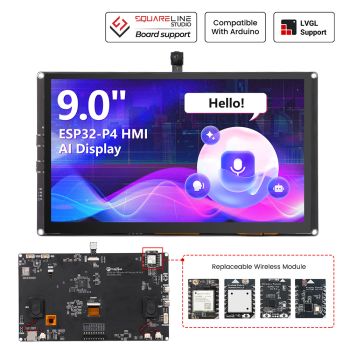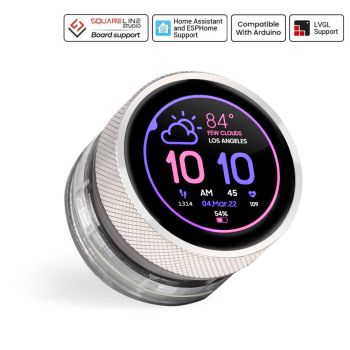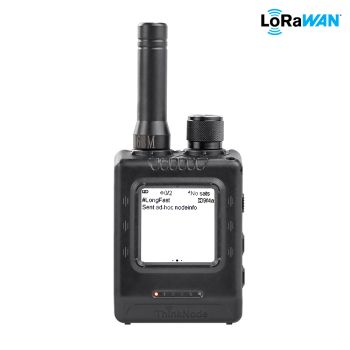I2C Addressable LED Controller Chip – IS3750
The IS3750 is an Addressable LED controller chip with I2C interface. It streams LED data from internal memory, freeing your microcontroller from strict timing. 5V-tolerant, 3.3V-powered, and ideal for smooth LED updates with minimal resource usage — even during slow or partial data writes.
Description
The IS3750 handles Addressable LED signal generation autonomously, offloading your microcontroller, FPGA, or embedded computer from the tricky Addressable LED signal generation. You simply write LED data to its internal memory map via I²C, and the chip takes care of rendering and generating the signal on its LED output pin. It is capable of controlling up to 1200 LEDs.
The device communicates over I2C and behaves like a typical I2C memory. It has 3600 8-bit memory register, where each group of 3 registers corresponds to the red, green, and blue channels of a single LED (1200 LEDs × 3 channels = 3600 registers).
Once you've written the LED data to the IS3750, writing a '1' to the SHOW register triggers the chip to start generating the LED data stream, instantly updating all LEDs.
Benefits
Because the IS3750 manages all time-critical signal rendering and generation internally, your microcontroller can can transmit data without worrying about the strict timing of addressable LED protocols. This allows for asynchronous, flexible I2C communication, while still achieving precise and synchronized LED control.
The usage of the IS3750 also reduces CPU interruptions, peripheral usage (such as timers), and both flash and RAM consumption. Additionally, it eliminates the need for dedicated pins, as it operates over a shared I2C-serial interface.
Overall, the IS3750 helps reduce engineering effort and time-to-market (TTM) by simplifying the implementation of Addressable LED control in your product.
Specs
- Drives up to 1200 3-color addressable LEDs or 900 4-color addressable LEDs
- FPS: 27 Hz
- Compatible with:
- WS2811
- WS2812 / WS2812B / WS2812C
- WS2813
- WS2815
- NeoPixel
- SK6812
- GS8208
- All color sequences: GRB, RGB, etc.
- LEDs with 3, 4, and more colors: GRBW, RGBW, RGBWC (LEDs with warm and cold white)
Examples and Documentation
Documentation
Firmware Examples
Hardware Examples
Need an Evaluation Board?
-
👉 For Arduino and STM32 Nucleo Boards: Kappa3750Ard
-
👉 For Raspberry Pi and other single board computers: The Kappa3750Rasp
Advantages
Firmware Advantages
-
🛠️ Forget about Addressable LED protocol generation: No need to deal with frame parsing, micro and nanosecond timings, Timer interrupts, etc.
-
❌ No libraries needed: Just use standard I2C functions
-
🟢 Control upto 1200 LEDs
-
⚡ Perfect for heavily loaded CPUs or ISR-heavy microcontrollers
-
📝 Arduino, STM32, and Raspberry Pi examples available
-
🧪 Evaluation board available to make some tests in Arduino/Nucleo and Raspberry Pi form factor
-
⏱️ Save firmware engineering time
Hardware Advantages
-
🔌 Save pins on your microcontroller: No need to sacrifice any UART pins as it uses I2C, a shared interface
-
🧘 Reduce the CPU load of your microcontroller
-
💾 Reduce Flash and RAM memory footprint
-
⚙️ Save microcontroller resources (UART, Timers, etc.)
-
🗂️ Schematic design examples available
Compatibility Advantages
-
🔄 Great for non-deterministic systems (like Raspberry Pi and single-board computers)
-
💡 Compatible with 5V I2C serial interfaces
-
🏎️ Supports I2C speeds: 100kHz, 400kHz, and 1MHz
-
🖥️ Ideal for FPGA designs
Production Advantages
-
🧷 Easy-to-solder SO8N package
-
📦 Reels available for pick-and-place machines
Commercial Advantages
-
🚀 Speeds up development
-
⚙️ Faster prototyping
-
🏁 Shorter time-to-market







